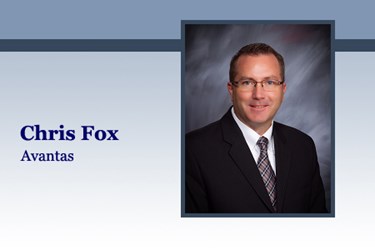Keys To Building A Fortified Staffing Process Ahead Of The Nurse Retirement Surge

By Chris Fox, president, Avantas
AMN Healthcare recently released its 2015 Survey of Registered Nurses. This research included input from nearly 9,000 RNs on topics ranging from retirement, education, and emerging roles. A number of the findings struck me, the following two especially:
- 62 percent of RNs over 54 are thinking about retirement and most say they plan to retire within three years
- RNs love their career choice, but have mixed feelings about their job, citing not having adequate time with their patients, feeling their job negatively affects their health, and so on
That leaves us with the most experienced nurses nearing retirement and the majority of remaining nurses not feeling overjoyed with their jobs, although they love nursing.
This points to an overwhelming need to improve conditions for care staff. Typically, the top dissatisfier for staff are staffing/scheduling issues, e.g., being short, having to float, having shifts cancelled, and being recruited constantly to pick up additional shifts.
One of the solutions to this critical concern is a combination of technology and workforce strategies that can provide more certainty with staffing, greater work-life balance, and increased time with patients.
Technology
How does your organization schedule its caregivers? If your organization is like most you might use a combination of a scheduling tool and paper, and this may vary by department. A manager will use the previous schedule and make changes to it based on staff requests collected before (and during) the schedule creation process.
The better alternative is to staff to forecasted patient volume. There are software solutions that offer this in one form or another, but even without this type of technology organizations can make gains with the analysis of volume trends both weekly and year-over-year. Scheduling staff in line with demand results in more accurate staffing plans and fewer instances of the staff dissatisfiers mentioned above.
Technology will never solve this issue alone however. Certain policies should be in place and closely adhered to that limit the administrative duties of scheduling and also give more control to the individual team members. One example might be allowing staff to proactively build their own schedules in alignment with patient demand. A technology tool that allows your full-time core staff or flexible contingency staff the opportunity to proactively choose shifts can both ensure that your resources are available when the patients need them the most but also build staff satisfaction through increased control over their schedules.
Workforce Strategies
How does your organization adjust to spikes in volume, ill calls, and other last-minute issues? Again, if you are like most organizations you might end up making recruitment calls or asking staff to stay late, offering large, last-minute incentives. Or, you may have a mandatory overtime policy in place. You may also rely on agency staff to fill in last-minute gaps in the staffing plan.
None of these strategies are sustainable.
I would argue that offering incentives can be a very good strategy if it is done proactively and in a manner in line with the budget and as part of a greater contingency staff strategy. Agency usage also is not inherently a bad strategy. In fact, quite the opposite. The right agency relationships can round out an organization’s contingency staff plan, but like the offering of incentives, it’s the amount you rely on and how you use them that can cause the problem.
The better strategy is to have contingency staffing sources based on an analysis of need. The right number and layering of contingency resources will vary by organization. Basically, it is the amount needed to flex up in times of typical high volume and flex down with typical low and/or normal volume.
Creating Stability
The retirement of any generation from the workforce always comes with the capacity of losing decades of irreplaceable experience and knowledge. In nursing – a profession where the power of positive mentors can have life and death implications – the concern is incredibly more significant. The dissatisfaction of younger nurses and the threat of losing them to other professions or having a disengaged workforce is equally concerning. Provider organizations must do everything in their power to motivate and empower all their caregivers – the experienced, young and middle-career staff. That mix of tenure within a department promotes knowledge transfer, and when set in a positive and supportive environment, can result in greater stability and longer tenure.
About The Author
Chris Fox is a healthcare industry veteran and thought leader. Chris joined Avantas in 2006, bringing his deep expertise and innovative approach to bear on the staffing challenges that have long plagued healthcare organizations. In 2007, he led a team of Avantas experts on a development project to create Smart Square®, the only web-based labor management application developed by healthcare professionals for healthcare professionals. Chris is a member of the following organizations: American College of Healthcare Executives (ACHE), Healthcare Financial Management Association (HFMA,) and the American Organization for Nurse Executives (AONE).
